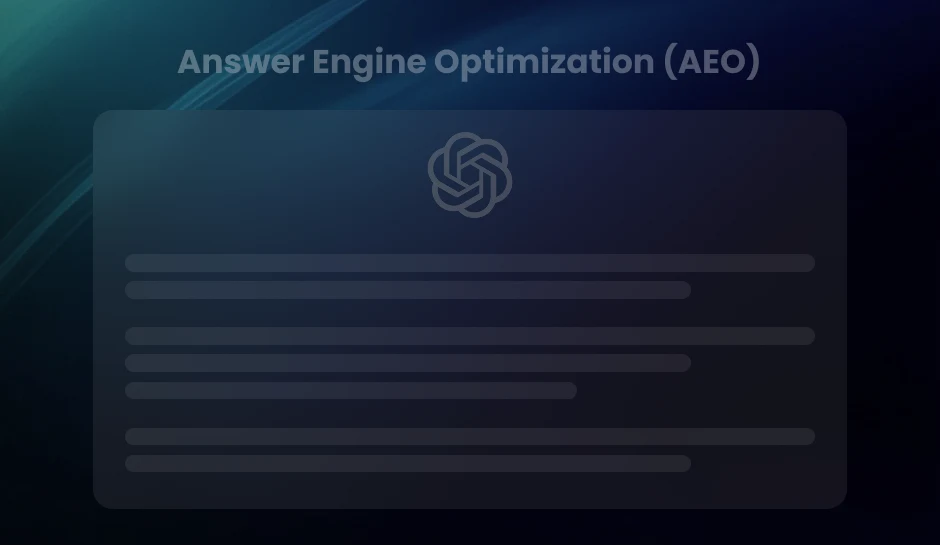
Understanding View-Through Attribution vs Click Attribution: What Every Marketer Should Know
Attribution models are essential for tracking the effectiveness of digital marketing campaigns. While click attribution focuses on immediate user actions, view-through attribution measures the long-term influence of brand exposure. Understanding when and how to use both can significantly impact marketing performance and budget allocation.
Consider this: a company invests heavily in digital marketing—running ads across multiple platforms, including search, display, and social media—yet they struggle to pinpoint which channels are truly driving conversions. Despite pouring resources into campaigns, they find themselves at a crossroads, unsure which efforts are moving the needle. This is a common scenario in today’s marketing landscape, where accurately attributing value to various touchpoints in the customer journey is a persistent challenge.
At the heart of this challenge are two key attribution models: click attribution and view-through attribution. Both aim to measure the effectiveness of ads in driving conversions, but they take very different approaches.
- Click Attribution assigns credit to a user’s last click before completing a conversion. It’s often seen as the go-to model for direct response tracking.
- View-Through Attribution, on the other hand, gives credit to an ad impression (or view) that occurred before a conversion, even if the user did not click the ad.
The core issue? Relying solely on click attribution can significantly undervalue the influence of display and video ads, which often work silently in the background, guiding potential customers toward a conversion without ever receiving a click. This can leave businesses with an incomplete picture of how their marketing efforts are truly performing.
What Is View-Through Attribution?
View-through attribution is a model that assigns credit to an ad impression when a user sees an ad but doesn’t click on it, yet later converts, such as making a purchase or signing up for a service. Unlike click attribution, which focuses only on direct actions, view-through attribution acknowledges the indirect impact that ads can have on driving conversions.
Here’s how it works:
- A user is exposed to an ad—whether a display banner, video ad, or social media promotion—without clicking on it.
- Sometime later, that same user takes action and completes a conversion, like purchasing a product or subscribing to a newsletter.
- The conversion is then attributed to the initial ad exposure, even though the user didn’t click.
Key Benefits of View-Through Attribution
- Measuring long-term brand awareness:
- Tracking passive engagement:
- Understanding the “soft influence” on conversions:
View-through attribution helps track the indirect effects of brand exposure. Even if a user doesn’t click immediately, seeing your ad may create familiarity, prompting future conversions.
Many users interact with ads just by seeing them. View-through attribution lets you measure these passive interactions’ influence on conversions, which traditional click-based models often miss.
Often, consumers need multiple touchpoints before they make a decision. View-through attribution captures how initial ad impressions, even without direct clicks, contribute to final conversions down the road.
This model is ideal for campaigns that build brand awareness and nurture long-term customer relationships. If your marketing strategy involves upper-funnel activities, such as display ads or video content, view-through attribution is crucial for understanding its full impact.
What Is Click Attribution?
Conversely, click attribution is a more straightforward approach that assigns credit to the last click a user makes before completing a conversion. If a user clicks on an ad and subsequently buys a product or signs up for a service, that click gets all the credit for the conversion.
Here’s how it works:
- A user clicks on an ad—be it a paid search ad, display banner, or social media ad.
- The user completes a conversion shortly afterward, such as making a purchase or submitting a form.
- The conversion is credited to the click, showing the immediate, direct impact of the ad interaction.
Key Benefits of Click Attribution
- Measuring immediate impact:
- Quantifying user action:
- Optimizing for performance-driven marketing:
Click attribution directly links user actions to conversions, making it easy to assess which ads drive real-time results and immediate responses.
By tracking the click that led to a conversion, businesses can directly measure how effectively each ad motivates user actions, allowing for optimized targeting and better ad spend allocation.
If your goal is to drive conversions quickly—whether purchases, lead submissions, or other actions—click attribution gives clear insights into what’s working and what’s not.
Click attribution is particularly useful for businesses focused on performance-driven campaigns, where the objective is to see measurable results right away. It’s well-suited for bottom-of-funnel marketing, where the focus is on driving immediate actions from users close to converting.
View-Through Attribution vs Click Attribution: A Combined Approach
When evaluating view-through attribution vs click attribution, it’s essential to recognize that neither model should be considered in isolation. Rather, integrating both can provide a far more complete picture of your marketing efforts and help optimize your overall strategy.
Rather than viewing these two attribution models as mutually exclusive, they complement each other, giving businesses a richer understanding of how various touchpoints contribute to a conversion. While click attribution is excellent for capturing immediate, direct actions, view-through attribution offers insight into how brand exposure and passive engagement influence customer decisions over time.
Leveraging Both Models for Greater Insights
- Both click attribution and view-through attribution offer valuable insights that complement each other. Click attribution is excellent for measuring the direct impact of ads that lead to immediate conversions, while view-through attribution provides a fuller picture of how brand exposure influences future decisions.
- By using both models together, marketers can gain a more holistic view of their campaigns. Click attribution tells you which touchpoints are driving direct actions, while view-through attribution helps measure the influence of ads that might not have resulted in an immediate click but still contributed to the final conversion.
Multi-Touch Attribution: The Power of Combining Views and Clicks
The most effective way to leverage both attribution models is through a multi-touch attribution (MTA) framework. This model considers all touchpoints—views, clicks, and even interactions via social media, email, or organic search—to evaluate the entire customer journey.
In a multi-touch attribution model, credit is not awarded to a single interaction, but rather distributed across all touchpoints that contributed to the conversion. For instance, even if a user didn’t click on a display ad, their initial exposure to the ad still played a role in their decision-making process when they later clicked on a paid search ad. The multi-touch model enables businesses to measure both direct and indirect contributions to a conversion.
Here’s how combining view-through and click attribution can be beneficial:
- Click attribution helps businesses measure the immediate impact of ads that directly lead to conversions.
- View-through attribution captures the longer-term brand influence, tracking how earlier ad impressions influenced future actions, even if the user didn’t click right away.
Customer Journey Example: Illustrating the Combined Approach
Let’s walk through a customer’s journey to see how both models contribute:
- Step 1:
- Step 2:
- Step 3:
A customer sees a display ad for a product but does not click on it (view-through attribution).
A few days later, the customer searches for the product directly and clicks on a paid search ad (click attribution).
They complete the purchase.
In a multi-touch attribution model, credit is not given solely to the search ad click. Instead, credit is distributed across the display ad view, the search click, and the final purchase, reflecting how each touchpoint influenced the customer along their journey.
Incrementality Testing: Measuring True Impact
Marketers can employ incrementality testing to understand the true value of view-through campaigns. This method compares the results of campaigns with and without view-through tracking enabled, allowing you to gauge the incremental value of brand exposure. By measuring the difference between conversions that occurred with or without exposure to an ad (even without clicks), you can accurately assess the impact of brand awareness efforts.
Key Differences: View-Through vs Click Attribution
| Aspect | View-Through Attribution | Click Attribution |
| Measurement Focus | Measures the influence of ad exposure even without a click. | Measures the direct impact of a click that leads to conversion. |
| Impact on Customer Journey | Focuses on top-of-funnel engagement, brand exposure. | Focuses on bottom-of-funnel actions, direct conversion. |
| Role in Decision-Making | Captures indirect influence, shaping future decisions. | Tracks immediate decisions and actions taken right after interaction. |
| Key Benefits | Long-term brand awareness, passive engagement, and soft influence. | Immediate actions, quantifies user interaction directly. |
| Ideal For | Brand awareness campaigns, upper-funnel strategies. | Performance marketing, direct response campaigns. |
When Should You Use View-Through Attribution vs. Click Attribution?
Both view-through attribution and click attribution have their distinct advantages, depending on the goals and objectives of your marketing campaigns. Understanding when to prioritize one over the other can help you optimize your strategies and get the most out of your marketing efforts. Let’s explore ideal scenarios for both.
When to Prioritize View-Through Attribution
View-through attribution is best suited for campaigns aimed at building brand awareness, creating long-term customer relationships, and influencing decisions indirectly. This model is ideal when the goal is not just immediate conversions but also cultivating familiarity and trust with your target audience.
Ideal Scenarios:
- Branding and Awareness Campaigns:
- Upper-Funnel Marketing:
When the focus is on reaching a wide audience and getting your message in front of as many eyes as possible, view-through attribution helps track how ads (even if not clicked) contribute to a conversion later down the line.
View-through attribution is particularly valuable for top-of-the-funnel activities, such as display ads, video content, or social media ads. These ads help build awareness and interest but don’t always result in immediate clicks.
Examples of Successful Usage:
- A consumer electronics brand runs a series of display ads to raise awareness about a new product. Even though users might not click on the ads right away, they are exposed to the brand. Later, these users search for the product or visit the website directly, ultimately leading to conversions.
- Automotive brands often use view-through attribution to measure the impact of TV or online display ads in creating awareness. Even if users don’t engage with the ad directly, they might later visit a dealership or schedule a test drive after multiple exposures to the brand.
When to Prioritize Click Attribution
Click attribution, on the other hand, is ideal when your focus is on performance-driven marketing—campaigns designed to drive immediate actions and measurable conversions. This model is best when you need to track direct responses and understand which touchpoints are actively pushing users toward making decisions.
Ideal Scenarios:
- Direct Response Campaigns:
- Paid Search & PPC Campaigns:
Click attribution is best suited for campaigns that are designed to elicit an immediate action from users, such as clicking on a paid search ad, purchasing a product, or filling out a form.
When running Pay-Per-Click (PPC) campaigns or display ads where the goal is to drive traffic to a website and measure conversions directly, click attribution provides a clear cause-and-effect relationship.
Examples of Successful Usage:
- An e-commerce company running a PPC campaign uses click attribution to track which specific ads drive purchases. The focus is on optimizing ad creatives, keywords, and landing pages to improve ROI and increase conversions.
- A SaaS company that offers a free trial uses click attribution to track which display ads or search ads led users to sign up for the trial. By understanding the exact touchpoints that generated clicks, they can optimize future campaigns to maximize conversions.
Benefits for Conversion Tracking:
- ROI Measurement:
- Optimizing Performance:
Click attribution allows you to track direct conversions, making it easier to measure the return on investment (ROI) for specific campaigns and channels.
By understanding which ad interactions led directly to conversions, marketers can adjust bids, ad creatives, and strategies to improve performance.
The Future of Attribution: What’s Next Beyond Click vs View-Through?
The future of attribution is evolving beyond the simple choice of click vs view-through. Emerging technologies like machine learning (ML) and artificial intelligence (AI) are transforming attribution models, enabling more dynamic and real-time tracking of customer journeys. These advancements will create more sophisticated, multi-touch attribution models that can assign variable credit based on each touchpoint’s impact, offering a deeper understanding of how different interactions contribute to conversions.
Attribution is becoming more customer-centric, moving away from broad assumptions and instead focusing on individual journeys. Future models will better integrate cross-device and cross-channel data, allowing businesses to track customer behavior across multiple platforms seamlessly. Real-time processing and predictive analytics will allow businesses to adjust campaigns on the fly, improving performance and ROI.
Overall, the future of attribution will be data-driven, providing businesses with more accurate, actionable insights to optimize their marketing efforts and stay ahead in a competitive landscape.
Key Takeaways
- Click Attribution tracks the immediate impact of user interactions, giving credit to the last click before a conversion, making it ideal for performance-driven campaigns.
- View-Through Attribution measures the indirect influence of ad exposure, helping marketers understand the long-term effects of brand awareness and passive engagement.
- Both models provide valuable insights, but using both together offers a more holistic view of customer journeys and improves overall marketing strategy.
- Multi-Touch Attribution takes a comprehensive approach by incorporating both clicks and views, reflecting the true customer journey and optimizing marketing spend.
- As technology evolves, AI and machine learning will enable more sophisticated attribution models that offer deeper insights and real-time optimization, paving the way for more customer-centric strategies.
Conclusion
Attribution is a critical piece of the marketing puzzle, helping businesses measure the effectiveness of their campaigns and allocate resources effectively. While click attribution provides immediate insights into actions that lead directly to conversions, view-through attribution sheds light on the long-term influence of brand exposure, especially for top-of-funnel activities. Understanding when to use each model—and ideally, combining both—can provide marketers with a richer, more nuanced view of their customer journeys. The future of attribution is moving towards more sophisticated, multi-touch models that integrate the power of machine learning and AI to offer real-time, actionable insights.
If you’re looking to optimize your marketing strategy and unlock the full potential of your attribution efforts.
Just write to us at info@diggrowth.com and we’ll get back to you.
Ready to get started?
Increase your marketing ROI by 30% with custom dashboards & reports that present a clear picture of marketing effectiveness
Start Free Trial
Experience Premium Marketing Analytics At Budget-Friendly Pricing.

Learn how you can accurately measure return on marketing investment.
Additional Resources
Don’t Let AI Break Your Brand: What Every CMO Should Know
AI isn’t just another marketing tool. It’s changing...
Read full post postFrom Demos to Deployment: Why MCP Is the Foundation of Agentic AI
A quiet revolution is unfolding in AI. And...
Read full post postAnswer Engine Optimization (AEO): The New Frontier of SEO in 2025
As digital experiences continue to evolve, so does...
Read full post postFAQ's
Choose click attribution for immediate actions, like conversions, and view-through attribution for brand awareness and longer decision-making processes, where exposure plays a crucial role in influencing future actions.
Yes, view-through attribution is valuable for e-commerce campaigns that aim to build brand awareness or consider the impact of display ads, even when they don’t directly lead to immediate clicks or purchases.
Yes, multi-touch attribution provides a more accurate and holistic view of customer behavior by considering all touchpoints, rather than crediting just one, helping you better understand the influence of various interactions on conversions.
View-through attribution doesn’t directly show immediate ROI, but it helps measure brand awareness’s long-term impact, which indirectly influences conversion rates, providing a fuller picture of marketing success over time.
Absolutely! AI and machine learning enhance attribution accuracy by analyzing vast amounts of data, identifying patterns in customer behavior, and providing deeper, more actionable insights for optimizing marketing strategies in real-time.


